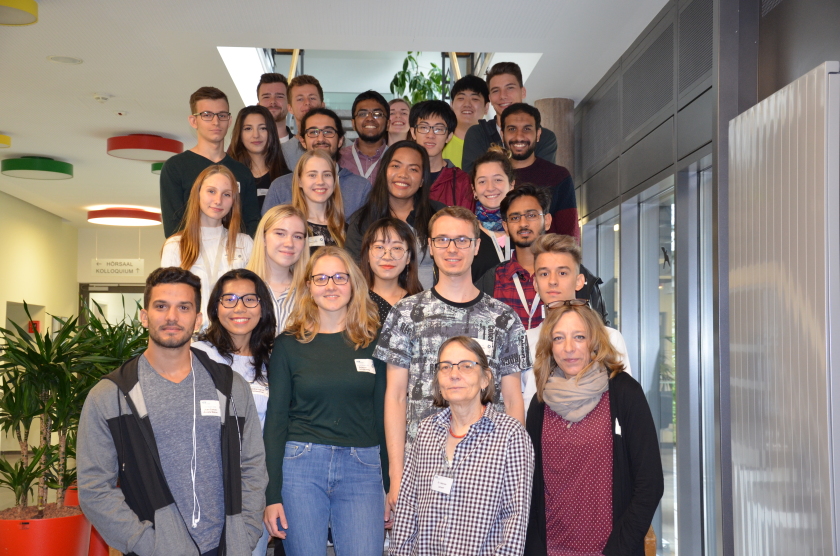Summer in the laboratory: 24 students from all over the world start their summer project

Group picture at arrival day at HZB. © S. Kodalle/HZB
For eight weeks the summer students are now working on a research project at the Helmholtz Centre Berlin. Experienced scientists of the HZB will support them. On Thursday, 30 August, they will present their results.
This year, 282 young people from all over the world applied to take part in the HZB's summer program. But only 24 places are available. Now the selected students can start their project. They come from 14 different countries, including Egypt, China, Cuba, Russia and Thailand, and study STEM subjects in Bachelor's or Master's programmes at their home universities. For many, the summer student program is the first step into research.
"Once again this year, many HZB researchers have signed up with project ideas for summer students and agreed to intensively support the students," says Gabriele Lampert, who coordinates the summer student program. "I know that this also means additional work, but the experience from recent years also shows that it is often worth it for both sides. Because it happens again and again that summer students come back later, for example for a doctorate, as cooperation partners or users.
Finally, the summer students will present their results on 30 August 2019 at 11:00. Three students will give a short lecture, all others will explain their project with a self-designed poster.
arö
https://www.helmholtz-berlin.de/pubbin/news_seite?nid=20621;sprache=en
- Copy link
-
The twisted nanotubes that tell a story
In collaboration with scientists in Germany, EPFL researchers have demonstrated that the spiral geometry of tiny, twisted magnetic tubes can be leveraged to transmit data based on quasiparticles called magnons, rather than electrons.
-
Bright prospects for tin perovskite solar cells
Perovskite solar cells are widely regarded as the next generation photovoltaic technology. However, they are not yet stable enough in the long term for widespread commercial use. One reason for this is migrating ions, which cause degradation of the semiconducting material over time. A team from HZB and the University of Potsdam has now investigated the ion density in four different, widely used perovskite compounds and discovered significant differences. Tin perovskite semiconductors produced with an alternative solvent had a particular low ion density — only one tenth that of lead perovskite semiconductors. This suggests that tin-based perovskites could be used to make solar cells that are not only really environmentally friendly but also very stable.
-
Synchrotron radiation sources: toolboxes for quantum technologies
Synchrotron radiation sources generate highly brilliant light pulses, ranging from infrared to hard X-rays, which can be used to gain deep insights into complex materials. An international team has now published an overview on synchrotron methods for the further development of quantum materials and technologies in the journal Advanced Functional Materials: Using concrete examples, they show how these unique tools can help to unlock the potential of quantum technologies such as quantum computing, overcome production barriers and pave the way for future breakthroughs.
